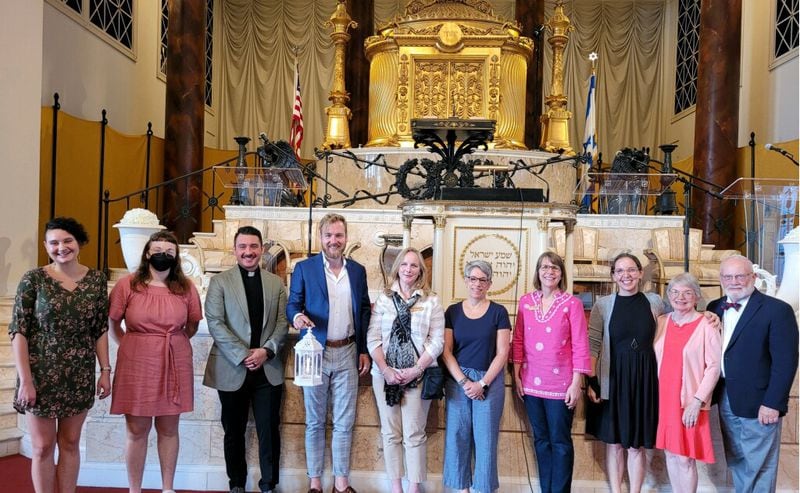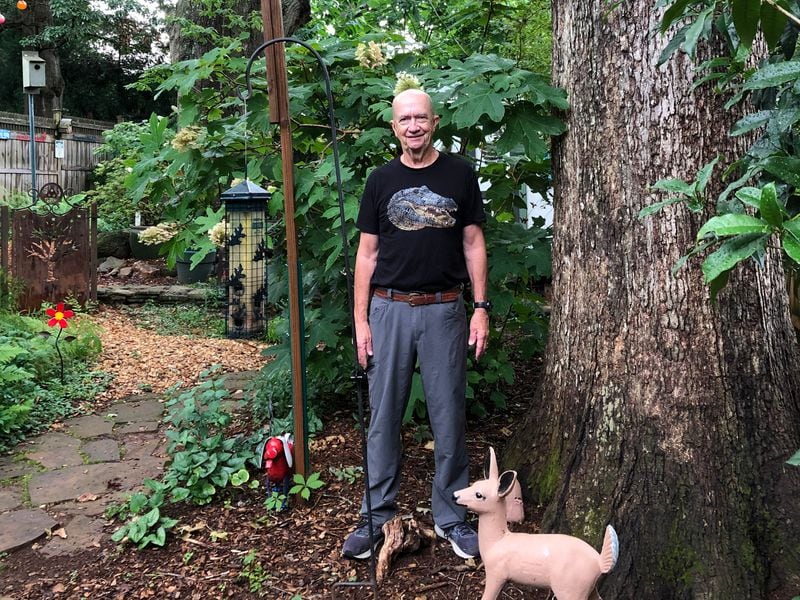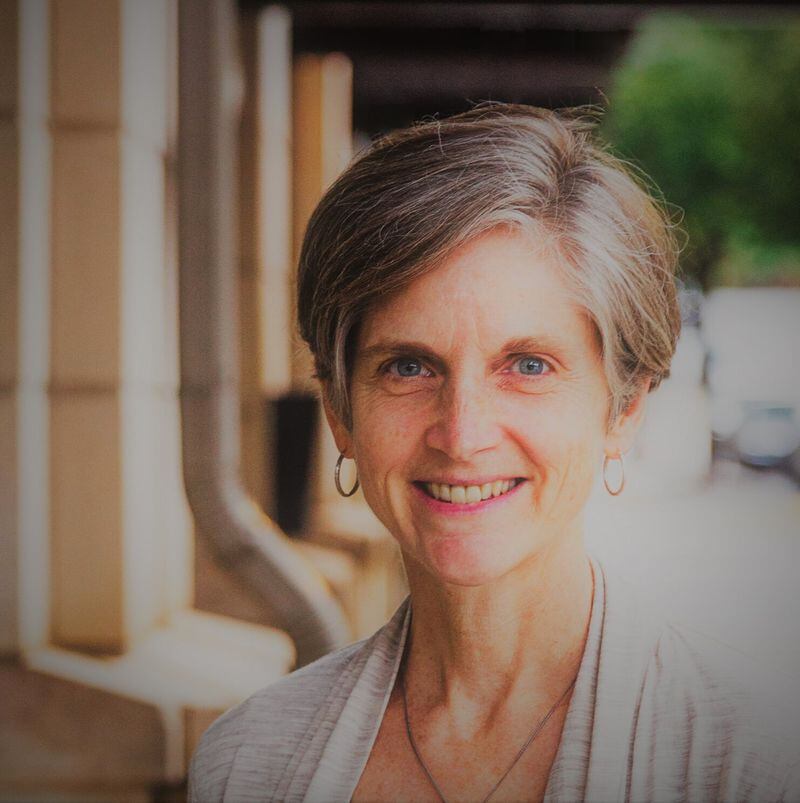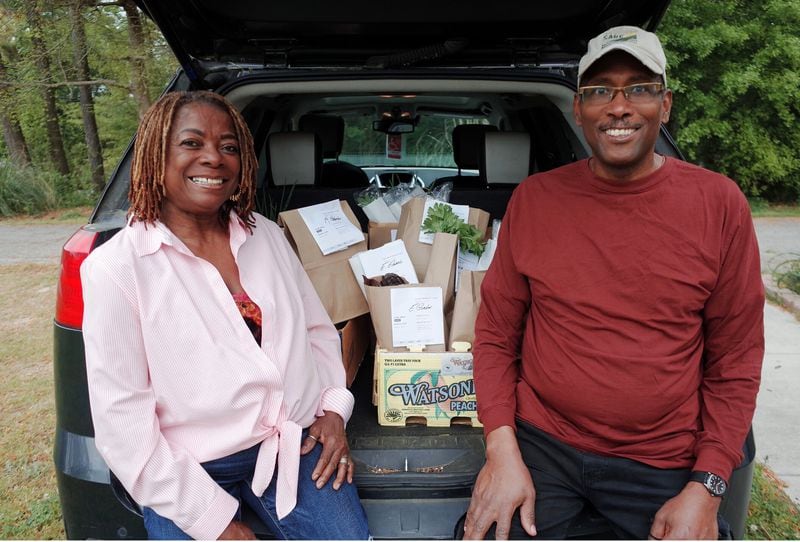Nancy Daves, 71, had planned to retire to Florida after her 23-year career in marine conservation with the National Oceanic and Atmospheric Administration ended. But the plan didn’t work out.
“I knew exactly where to go to look for places in Florida that would be appropriate in the time of climate change to move to, and all the places I wanted to go were going to be underwater in my lifetime,” she told The Atlanta Journal-Constitution.
Credit: Contributed
Credit: Contributed
And that’s how she found herself in Atlanta — for her, a safer distance from the ocean but with plenty of opportunities to contribute to environmental causes. Daves satisfies her urge to help in a time of growing societal concern about climate change by working on various kinds of issues through local organizations. Here’s how she and a cadre of other older Atlantans are contributing.
Adapting to retirement through environmental volunteerism
Daves serves with three organizations active in Georgia. She’s on the board of the Tybee Island Marine Science Center “so I can get my ocean groove without having to buy property;” she’s the current chair of the board of Georgia Interfaith Power & Light, a faith-based group; and she’s active with the Sierra Club Georgia Chapter. Her varied roles bring to light the differences between the organizations and how they might tie together when possible.
She often works with GIPL on consulting for houses of faith moving toward sustainable energy solutions. Her most recent work on the Sierra Club’s Georgia efforts has been in support of protecting the Okefenokee National Wildlife Refuge from the potential impacts of a proposed mining operation.
“It’s been sort of interesting to see the differences among the various organizations and what you can get done, how you can get things done in different ways,” she said.
Daves finds her career expertise useful as a volunteer, especially when advising organizations on situations that might involve regulatory complications. And she feels a new degree of freedom in comparison to her former job.
“I was always constrained in how much I could do things that were in keeping with my environmental feelings, so I feel like a kid in a candy store,” she said. “I’m not (currently) constrained at all by how strong an environmental stand I should take.”
Engaging in these pursuits after a career sometimes makes the most sense.
“We have lots of people who do this in addition to their day jobs, and more power to them, but those of us who are retired have got an awful lot more time to do this kind of stuff,” she said.
And environmental volunteerism during retirement can allow those who have had related careers to feel they’re continuing their contributions.
“If you have had a job in the government or anywhere else, you have some of your feeling of self-worth wrapped up in that … Doing something in the environmental community gives you more of the kind of feelings you had when you were working, and I’m sure that has helped me adapt to retirement,” Daves said.
Maintaining the canopy
Bill Pardue, 70, began planting trees with Trees Atlanta in the late ‘90s. Now, nearly 25 years later, he’s still in the city nearly every weekend installing new plantings and tending to older ones.
Credit: Contributed
Credit: Contributed
It’s his way of upholding the moniker that heralds the city’s arboreal leanings: a city in the forest. And it’s a nod toward the larger cause of environmentalism.
“I can’t think of anything that has more of an impact than trees on the climate,” he said as he spoke of the considerable time he spends planting, pruning and watering.
Pardue began volunteering with Trees Atlanta in 1998. At the time, he was on the Morningside Lenox Park Association Parks Committee, which is how he connected with Trees Atlanta.
“Trees Atlanta contacted the civic association, which is kind of the normal procedure to coordinate with the neighborhood on where to plant the trees,” he said. “It was pretty small at that time. There were three employees and one pickup truck.”
The operation has grown over the years, as have its contributions, which include 150,000 trees planted, according to treesatlanta.org.
“Initially, we just had one project every Saturday morning, and now they have numerous projects on Saturdays and some during the week, too,” Pardue said.
At this point, 40 to 45 of his weekends every year go toward tree projects. Planting, he said, takes place from October through March during the dormant season, but the organization performs maintenance year-round. Trees Atlanta has a database with all the trees it’s planted.
“You can pick out a street, and they’d tell you what year it was planted and what species it is, and they work it out with maintenance,” Pardue said. “What they aim to do, mostly, is agree to a two- or three-year maintenance contract.
“They’ll plant the tree, and then, they’ll come back for the next two years and water and mulch and prune. You don’t just plant the tree and go off and forget it. The first year or two are really critical years. If it survives that, it has an excellent chance of living a long life.”
Plantings often include some of Georgia’s 30 native oak varieties and some non-native species like crape myrtles, which Pardue said can be a good fit along roads.
“We plant a lot of trees along the street, and so there are several determining factors on what species you can plant,” he said. “It really comes down to … the width of the right of way — you’re either between the sidewalk or the street — and whether or not you have power lines overhead.”
Pardue, a retired accountant, estimates he’s personally planted thousands of trees over the years. He advocates for their importance to the environment as a whole.
“I was just listening to a podcast the other day, and the person they were interviewing referred to trees as the lungs of the planet because trees absorb CO2 and release oxygen, so it’s probably the single most environmental impact of anything,” he said. “You have to have trees to have a living planet.”
Supporting local farmers to impact the environment
At 57, Alice Rolls is still active in her professional role as president and CEO of Georgia Organics.
Credit: Contributed
Credit: Contributed
The Atlanta-based organization serves to train farmers in sustainable practices and increase the number of organic farmers in Georgia while also helping to build what Rolls calls “resilient local food communities.”
Consumption of locally and sustainably grown food is an environmentally friendly practice in which people in a wide range of demographics can participate, she said. Those looking to shop this type of food today have choices. They range from farmers markets to mobile markets in MARTA stations, to programs that work to double Supplemental Nutrition Assistance Program — commonly known as food stamps — benefits at farmers markets.
And in supporting local, organic farmers, consumers in turn support practices that rely less on chemicals and more on establishing soil health.
Credit: Contributed
Credit: Contributed
“The more we can do to try to wean ourselves from the chemical onslaught and reduce that exposure and do more integrated pest management strategies within agriculture, the better off our soil is going to be, the better off we are going to be, and I think probably our food will taste better, too,” Rolls said.
Eating sustainably produced food that grows close to home has positive impacts including easing the strain on the environment and encouraging a feeling of community.
“The case for local is your food is fresher because it hasn’t traveled 1,500 miles. And fresher food is nutritionally more valuable. It lasts longer if you bring it home,” she said. “You’re supporting local economies, you’re supporting local farmers.
“We like to say Georgia Organics is about shifting agriculture from just this sort of commodity mindset to a community mindset. If we localize that, we can keep dollars locally, we can invest in people, we can get to know people, we can build community … And the No. 1 reason people go to farmers markets is not for the food — it’s for community … How do you put a value on that?”
In her 18 years at Georgia Organics, Rolls has seen a significant public shift toward concern for the environment and concepts of sustainability.
“Even though the challenges are daunting, I’m encouraged at least that we’re on a good trajectory in that regard, even though we have lots of setbacks,” she said.
To get specialized news and articles about aging in place, health information and more, sign up for our Aging in Atlanta newsletter.
About the Author









